
Concept explainers
(a)
Interpretation:
The product on reaction of
Concept introduction:
The
Answer to Problem 14.27AP
The product on reaction of
Explanation of Solution
The reaction of

Figure 1
In the above reaction, octyne reacts with two moles of hydrogen to form octane. Octyne is an unsaturated molecule consisting of a triple bond. It reacts with hydrogen to form octane. Therefore, the product on reaction of
The product on reaction of
(b)
Interpretation:
The product on reaction of
Concept introduction:
The alkynes consist of a triple bond between two carbon atoms. The general formula of alkynes is
Answer to Problem 14.27AP
The product on reaction of
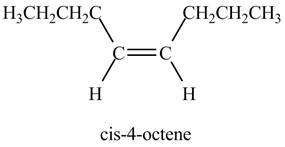
Explanation of Solution
The reaction of

Figure 2
In the above reaction, octyne reacts with hydrogen to form octene. Octyne is an unsaturated molecule consisting of a triple bond. It reacts with hydrogen in presence of Lindlar’s catalyst to form
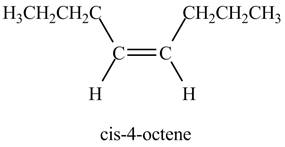
Figure 3
The product on reaction of
(c)
Interpretation:
The product on reaction of the product formed in part (b) with
Concept introduction:
The alkynes consist of a triple bond between two carbon atoms. The general formula of alkynes is
Answer to Problem 14.27AP
The product on reaction of the product formed in part (b) with
Explanation of Solution
The product formed in part (b) is shown below.

Figure 4
The reaction of the product formed in part (b) with

Figure 5
In the above reaction, octene a product from part (b) reacts with ozone to form ozonide. This ozonide formed hydrolysis to give two moles of butanoic acid as shown in figure 6. Therefore, the product formed on ozonolysis of octene is butanoic acid,
The product on reaction of the product formed in part (b) with
(d)
Interpretation:
The product on reaction of the
Concept introduction:
The alkynes consist of a triple bond between two carbon atoms. The general formula of alkynes is
Answer to Problem 14.27AP
The product on reaction of the
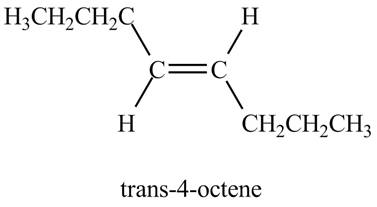
Explanation of Solution
The reaction of

Figure 6
In the above reaction, octyne reacts with sodium in liquid ammonia to form

Figure 7
The product on reaction of the
(e)
Interpretation:
The product on reaction of
Concept introduction:
The alkynes consist of a triple bond between two carbon atoms. The general formula of alkynes is
Answer to Problem 14.27AP
The product on reaction of the
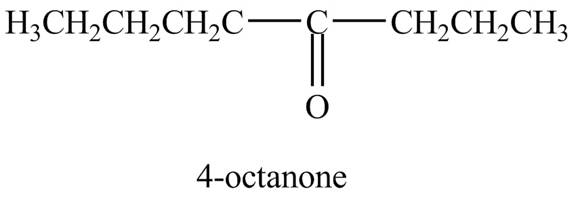
Explanation of Solution
The reaction of

Figure 8
In the above reaction, octyne reacts with
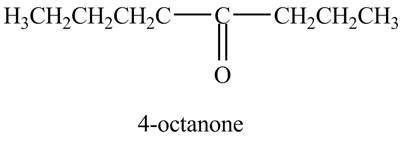
Figure 9
The product on reaction of the
(f)
Interpretation:
The product on reaction of the
Concept introduction:
The alkynes consist of a triple bond between two carbon atoms. The general formula of alkynes is
Answer to Problem 14.27AP
The product formed on reaction of
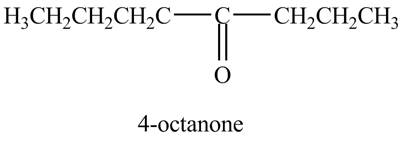
Explanation of Solution
The reaction of

Figure 10
In the above reaction, octyne reacts with boron hydride to form organoborane. Organoborane reacts with peroxide and hydroxide ion to form an enol. This enol tautomerises to form
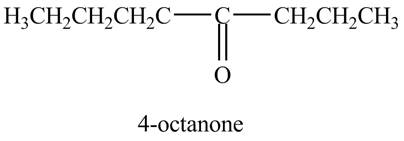
Figure 11
The product on reaction of the
Want to see more full solutions like this?
Chapter 14 Solutions
Organic Chemistry, Ebook And Single-course Homework Access
- How does the square root mean square velocity of gas molecules vary with temperature? Illustrate this relationship by plotting the square root mean square velocity of N2 molecules as a function of temperature from T=100 K to T=300 K.arrow_forwardDraw product B, indicating what type of reaction occurs. F3C CF3 NH2 Me O .N. + B OMearrow_forwardBenzimidazole E. State its formula. sState the differences in the formula with other benzimidazoles.arrow_forward
- Draw product A, indicating what type of reaction occurs. F3C CN CF3 K2CO3, DMSO, H₂O2 Aarrow_forward19) Which metal is most commonly used in galvanization to protect steel structures from oxidation? Lead a. b. Tin C. Nickel d. Zinc 20) The following molecule is an example of a: R₁ R2- -N-R3 a. Secondary amine b. Secondary amide c. Tertiary amine d. Tertiary amidearrow_forwardpls helparrow_forward
- pls helparrow_forward35) Complete the following equation by drawing the line the structure of the products that are formed. Please note that in some cases more than one product is possible. You must draw all possible products to recive full marks! a. ethanol + 2-propanol + H2SO4 → b. OH conc. H2SO4 CH2 H3C CH + K2Cr2O7 C. d. H3C A pressure CH3 + H2 CH Pt catalystarrow_forward21) The rate of reaction depends upon: a. the concentration and nature of reactants b. the temperature of the reaction C. whether or not a catalyst was used d. all of the above 22) A Maxwell-Boltzmann curve shows the distribution of molecular energies in a reaction system. When the temperature in this system is increased, the peak is a. higher and further to the right. b. higher and further to the left. c. lower and further to the right. d. lower and further to the left. 23) Which of the following correctly describes the reaction represented by the reaction below? CaCO3 (s) + energy → CaO (s) + CO2 (g) a. It is exothermic and the potential energy is greater in the reactants than the products. b. c. It is exothermic and the potential energy is greater in the products than the reactants. It is endothermic and the potential energy is greater in the products than the reactants. d. It is endothermic and the potential energy is equal for the products and reactants.arrow_forward
 Chemistry: Principles and ReactionsChemistryISBN:9781305079373Author:William L. Masterton, Cecile N. HurleyPublisher:Cengage Learning
Chemistry: Principles and ReactionsChemistryISBN:9781305079373Author:William L. Masterton, Cecile N. HurleyPublisher:Cengage Learning
